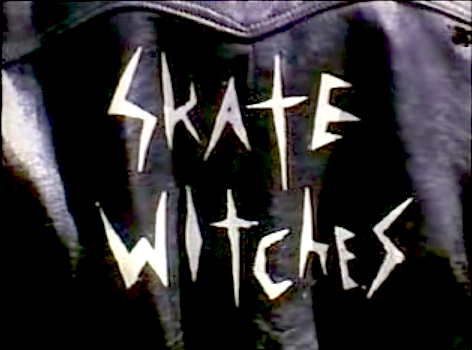
The aesthetics and content of 90’s zines anticipated much of blog culture. The online teen magazine www.rookiemag.com looks to both media for inspiration. This past week, Drawn And Quarterly published Rookie Yearbook One, which is basically a greatest hits of the essays that have appeared on the site. Like a tactile Tumblr, just about every page is decorated in doodles and photos, and inserts include a playable, neon-pink record, hamburger stickers, and a paper crown.
McNally-Jackson bookstore in Manhattan hosted a book launch and reading to celebrate Rookie Yearbook One’s release. Besides an audience with a median age of about 15 and a refreshment table featuring Blow Pops and pineapple soda, the reading was a grown up affair.
Rookie, the website and now the book, stands out because (for the most part) it’s put together by people the same age as its target audience. Tavi Gevinson, editor-in-chief of the magazine and editor of RYO, is sixteen years old. Her piece “How To Not Care What Other People Think of You” is somewhere between a diary entry and a personal essay. A young woman in the audience confessed she was having difficulty settling on a tone for her personal blog on feminism, and asked the Rookie staff for direction. Miss Gevinson suggested the young woman write about this conflict— that she admit the contradictory opinions she had and make that struggle the meat of the essay, instead of decisively, and prematurely, taking a consistent position.
Regular contributors read excerpts of pieces they had published in the magazine. Standouts included a coming out story by Arabelle Sicardi, and a piece of short fiction about a bi-polar parent, by Jenny Zhang. There were also some very recognizable readers, including Lena Dunham, who read an original guide to running away for girls ages 9, 16, and 26. Miss Dunham is known for her screenwriting and, like Nora Ephron and Woody Allen before her, also moonlights as an adroit and funny essayist. Dave Hill read “Loving You Is Easy Because You Live Close To My Parents House”, a personal essay from his collection Tasteful Nudes. Mr. Hill used his skill as a stand up comedian to tease out teenage melodrama, without undercutting the gravity of harboring a first love.
Emma Straub read a non-fiction essay “Clash of the Girl Gangs”, that appears online and in Rookie Yearbook One. She assessed the competition between high school friendship groups in hindsight, and admitted to the perpetual pursuit of feeling accepted. Miss Straub’s piece set a standard for the night: unaffected and forthcoming, she never underestimated the brainpower and emotional maturity of the young listeners. The tenor of her essay had the same even keel as her novels, including Laura Lamont’s Life In Pictures, that was published earlier this week by Riverhead Press.
It was moving to see so many young writers —and, in some cases, very, very young writers— take their personal writing into a more creatively ambitious and public place. The fact that most readers this night were female made the reading special and, by my standard, pretty radical.
The Bechdel Test, started by comic-book writer Allison Bechdel, measures movies by how much face time women get on screen, whether women ever talk to each other on screen, and if they do, whether they talk about anything besides men. In A Room of One’s Own, which, now that I think about it, is such a slim volume that it could be counted as one of the original feminist zines, Virginia Woolf considers the underrepresentation of female friendship in the canon.
"I tried to remember any case in the course of my reading where two women are represented as friends. (...) They are now and then mothers and daughters. But almost without exception they are shown in their relation to men. It was strange to think that all the great women of fiction were…not only seen by the other sex, but seen only in relation to the other sex. And how small a part of a woman’s life is that (...)"
Rookie is a platform to hear as well as participate in a dialogue between young women. The essays in RYO show how articulately teens can communicate and support one another through the string of come-uppances that make up adolescence. Those of us who were raised on YM and Seventeen, in the generation between Sassy Magazine and Rookie, are grateful to finally be provided with the texts we wish we’d had at their age.

